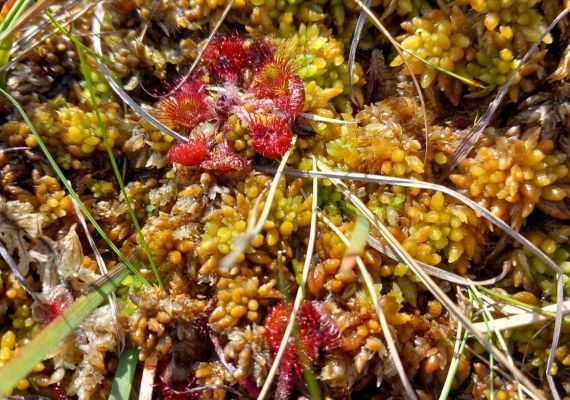Today, woodland makes up just 11% of Ireland, and only 2% of that consists of native trees. Forest restoration is seen as a hugely important element of rewilding and restoration, providing ecosystem services like flood prevention, with tree roots providing stability to riverbanks. But natural rewilding and regeneration of woodlands can take decades, depending on factors including seed production and forms of dispersal (if there are any native trees in the area), soil and ground conditions, grazing pressure and vegetation cover.
There are many peat restoration projects, in the form of rewetting and rewilding, with benefits for carbon sequestration, flood prevention and biodiversity. The restriction on grazing and reintroduction of lost species is aiding the recovery of other species, rebuilding ecosystem diversity, structure and resilience.
Critics of rewilding say we should protect existing wildlife before re-establishing lost species. But keystone species, especially apex predators, can define and enhance entire ecosystems, effecting trophic cascades (where a change in the top predator can affect the whole food web), and helping with the regeneration of land and plant life by keeping prey species away.
Restoring the food chain is also a complex process, especially where predator recovery is concerned, but it can be beneficial for native species. In Ireland, the pine marten (Martes martes), itself a recovering species, is helping red squirrel (Sciurus vulgaris) populations rebound. Red squirrels have been observed responding negatively to pine marten scent, where the non-native Eastern grey squirrels (Sciurus carolinensis) do not, making the latter more vulnerable to predation. Restoring the pine marten, a native predator that had become extinct from the majority of the island by the 20th century, has helped scientists study behavioural response and consider evolutionary history as a way to combat invasive species.
Similarly, if a habitat or landscape is to be rewilded, the active removal and management of invasive non-native species – such as Rhododendron (Rhododendron ponticum), American mink (Neovison vison) or Japanese knotweed (Fallopia japonica) is required to allow native species to thrive again.
A recent report (https://bsbi.org/) by the Botanical Society of Britain and Ireland revealed that 53% of the UK and Ireland’s indigenous plants are in decline and have been outnumbered by native species. Community and government initiatives are tackling invasive species like rhododendron (Rhododendron ponticum) which smothers native ground cover plants. Combined with measures to contain grazing animals like sika deer (Cervus nippon) and roe deer (Capreolus capreolus) as well as livestock, will give native ground-covering plants time to flourish.
With more and more engagement from communities, as well as investment from the government, we’re helping Ireland to rebuilt lost habitats and protect native species. To find out how we’re helping our clients and communities rebuild biodiversity and restore habitats, https://woodrow.ie/resources.

